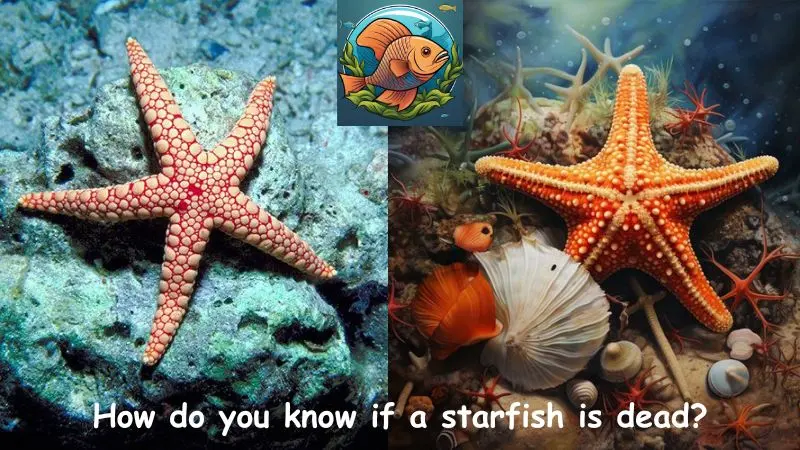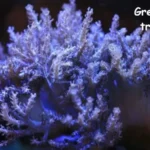marine life blog
How do you know if a starfish is dead?
The vibrant, often brightly colored starfish, with their unique radial symmetry and seemingly effortless movement across the ocean floor, are a captivating sight for anyone fortunate enough to encounter them. These fascinating creatures, scientifically classified as members of the class Asteroidea, are not fish at all, but echinoderms, related to sea urchins and sea cucumbers. Their intriguing biology and ecological importance have captivated scientists and the general public alike.
However, the question of how to determine if a starfish is alive or dead can be surprisingly complex. While the answer might seem straightforward at first glance, the reality is that identifying a dead starfish requires a deeper understanding of their physiology and behavior.
Unlike many other marine creatures, starfish lack obvious external signs of life, such as breathing or movement, that are easily discernible. This makes it challenging to determine their state of being simply by observation. So, in the article below, Let’s answer the question: how do you know if a starfish is dead? with fishtankmagic.com!
Understanding Starfish Physiology
To understand how to determine if a starfish is dead, we must first delve into their unique physiology. Starfish are remarkably resilient creatures, capable of surviving harsh conditions and even regenerating lost limbs. Their bodies are composed of a central disc with five or more arms radiating outwards. These arms are not mere appendages but contain vital organs, including the digestive system, reproductive organs, and even a portion of the nervous system.
One crucial aspect of starfish physiology is their water vascular system. This intricate network of canals and tubes allows them to move, feed, and even breathe. Water enters the system through a sieve-like structure called the madreporite, located on the aboral surface (the top side) of the starfish. This water is then used to power the tube feet, small, muscular appendages located on the underside of each arm. These tube feet act like suction cups, allowing the starfish to adhere to surfaces and move along the ocean floor.
The water vascular system also plays a critical role in respiration. Starfish lack gills or lungs, and instead rely on the diffusion of oxygen from the surrounding water through their skin and tube feet. This process is facilitated by the constant flow of water through the water vascular system.
How do You Know if a Starfish is Dead? Signs of a Dead Starfish: A Closer Look
While the lack of obvious external signs of life can make it difficult to determine if a starfish is dead, there are several key indicators to look for.
1. Rigidity and Lack of Movement:
A dead starfish will typically be rigid and inflexible, unable to move its arms or tube feet. The lack of movement is a strong indicator of death, as starfish are known for their slow but steady movement across the seafloor. However, it is important to note that some starfish may appear immobile even when alive, particularly if they are in a state of dormancy or if they are clinging tightly to a surface.
2. Discoloration and Decomposition:
As a starfish decomposes, its body will undergo noticeable changes in color and texture. The skin may become discolored, often turning pale or grayish, and the body may begin to soften and break down. The presence of a foul odor is another indication of decomposition.
3. Lack of Response to Stimuli:
A living starfish will typically respond to stimuli, such as touch or light. If a starfish is touched, it may retract its arms or move away from the source of the stimulus. However, a dead starfish will not exhibit any such response.
4. Absence of Tube Feet:
The tube feet, essential for movement and respiration, are a crucial indicator of a starfish’s health. If the tube feet are missing or damaged, it is a strong indication that the starfish is dead or severely injured.
5. Presence of Predators:
While not always a direct indication of death, the presence of predators feeding on a starfish can be a strong indicator that the starfish is no longer alive. Predators such as seabirds, fish, and other invertebrates often target weakened or dead starfish.
6. Internal Examination:
In some cases, it may be necessary to perform an internal examination to determine if a starfish is dead. This can be done by carefully dissecting the starfish, which will reveal the condition of its internal organs. However, this method should only be used as a last resort, as it can be harmful to the starfish if it is still alive.
The Importance of Proper Identification
Accurately determining whether a starfish is alive or dead is crucial for several reasons.
1. Scientific Research:
Scientists rely on accurate data about the health and abundance of starfish populations to understand their role in marine ecosystems. Mistaking a dead starfish for a living one can skew research results and lead to inaccurate conclusions.
2. Conservation Efforts:
Many starfish species are facing threats from pollution, habitat loss, and climate change. Understanding the health of starfish populations is essential for developing effective conservation strategies.
3. Ethical Considerations:
It is unethical to harm or kill living creatures, including starfish. By accurately identifying dead starfish, we can avoid unintentionally harming them.
4. Educational Value:
By understanding how to determine if a starfish is dead, we can educate others about the importance of respecting marine life and the delicate balance of marine ecosystems.
Conclusion: A Deeper Understanding of Life and Death
Determining whether a starfish is dead requires a careful observation of its physical characteristics and behavior. While the lack of obvious external signs of life can be misleading, a combination of indicators, including rigidity, discoloration, lack of response to stimuli, and the presence of predators, can help us distinguish between a living and a dead starfish.
Understanding the unique physiology of these fascinating creatures is essential for appreciating their resilience and vulnerability. By recognizing the signs of a dead starfish, we can contribute to the conservation of these important members of the marine ecosystem and promote a deeper understanding of life and death in the ocean.












